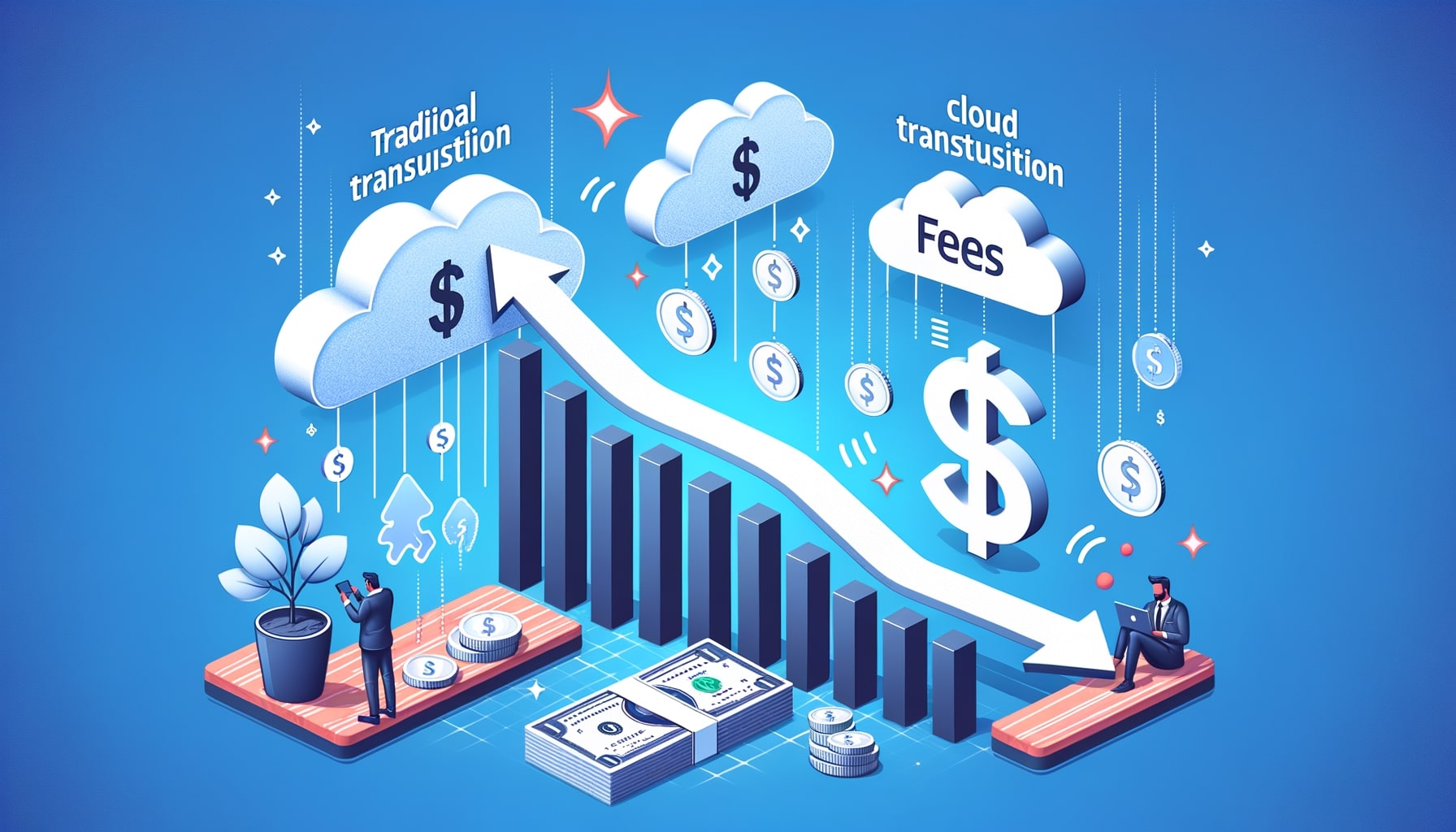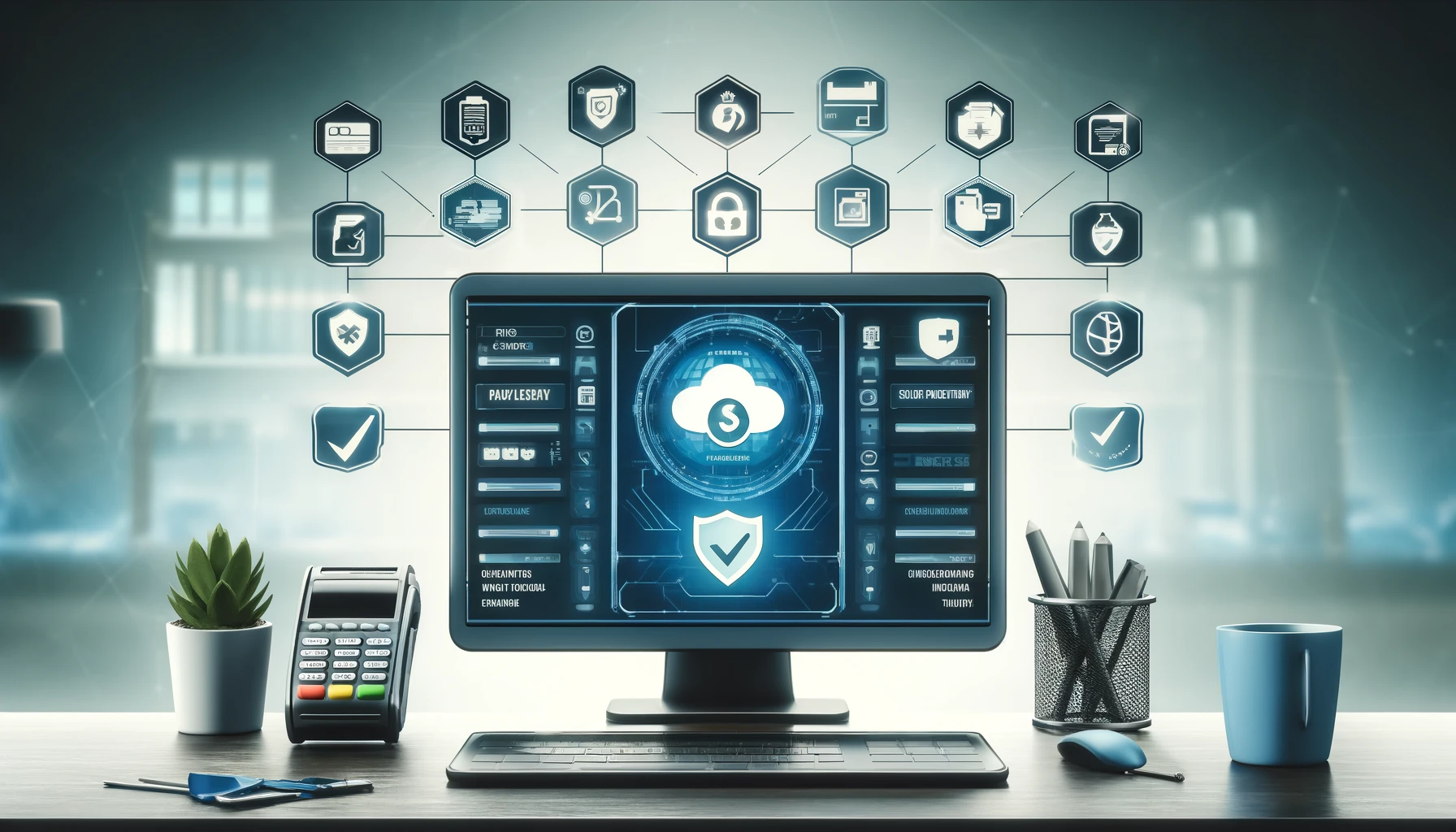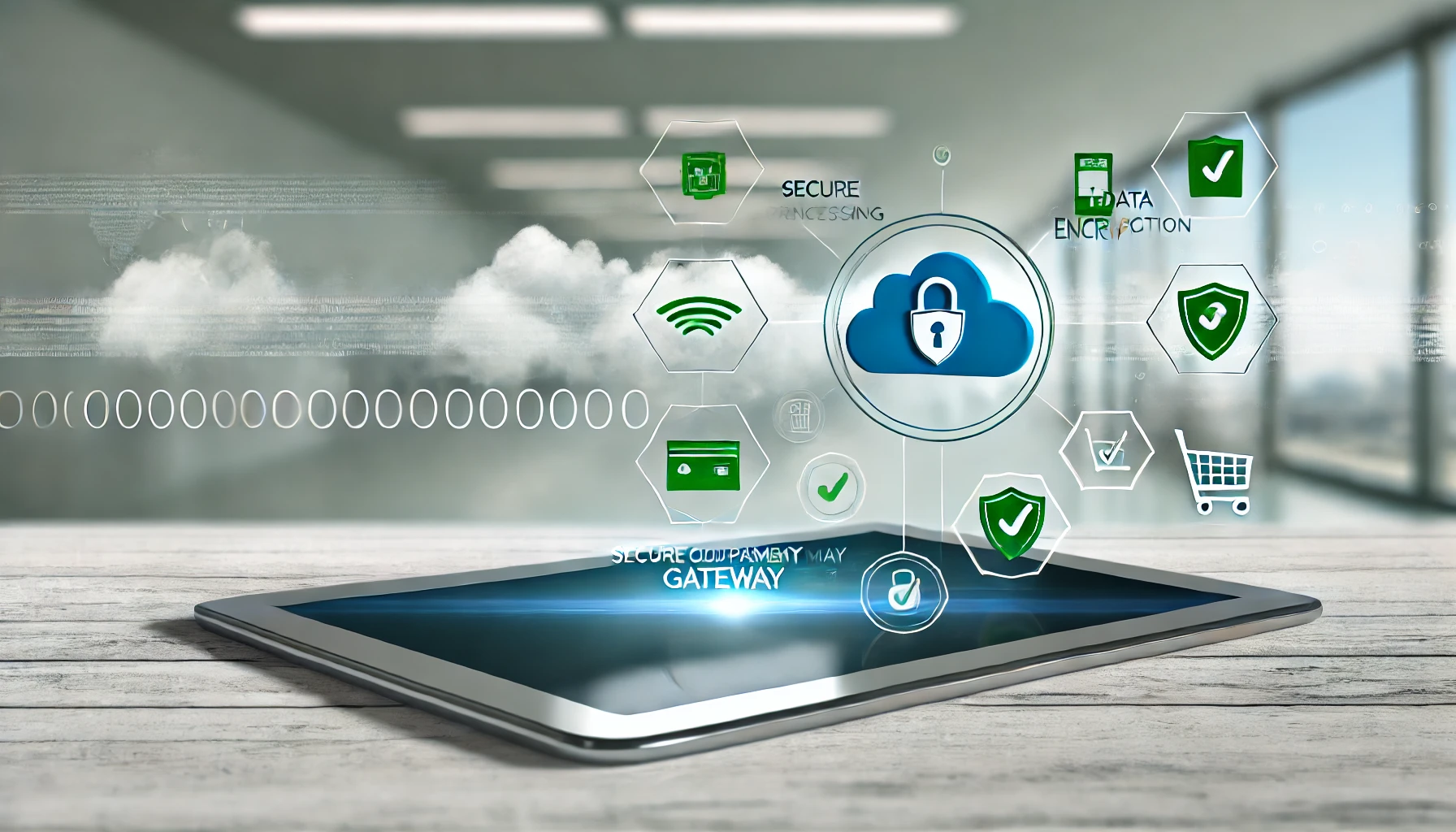Cybersecurity Measures for Payment Cloud Infrastructure
In today’s digital age, the use of cloud technology has become increasingly prevalent, especially in the realm of payment processing. Cloud payment infrastructure offers numerous benefits, such as scalability, cost-effectiveness, and flexibility. However, with these advantages come significant cybersecurity risks that must be addressed to ensure the safety and integrity of sensitive payment data.
The role of cybersecurity measures in payment cloud infrastructure is paramount. It involves implementing a comprehensive set of practices, technologies, and protocols to protect payment systems from unauthorized access, data breaches, and other cyber threats. By implementing robust cybersecurity measures, organizations can safeguard their payment cloud infrastructure and maintain the trust of their customers.
Threat Detection and Prevention in Cloud Payment Environments
Understanding the evolving threat landscape in cloud payment environments is crucial for effective cybersecurity. Cybercriminals are constantly evolving their tactics to exploit vulnerabilities in cloud systems. Therefore, organizations must stay vigilant and implement robust threat detection mechanisms.
One of the key components of threat detection in cloud payment environments is the use of advanced analytics and machine learning algorithms. These technologies can analyze vast amounts of data in real-time to identify patterns and anomalies that may indicate a potential cyber threat. By leveraging these technologies, organizations can detect and respond to threats more effectively.
Implementing proactive measures for preventing cyber threats in cloud payment systems is equally important. This includes regularly updating and patching cloud infrastructure to address known vulnerabilities. Additionally, organizations should implement strong access controls and user authentication mechanisms to ensure that only authorized individuals can access payment data.
Understanding the Risks: Common Cybersecurity Threats in Cloud Payment Infrastructure
To effectively protect cloud payment infrastructure, organizations must first understand the common cybersecurity threats they face. Some of the most prevalent threats include:
- Malware and Ransomware Attacks: Malicious software can infiltrate payment systems, compromising sensitive data and demanding ransom for its release.
- Phishing and Social Engineering: Cybercriminals often use deceptive tactics to trick users into revealing their login credentials or other sensitive information.
- Insider Threats: Employees or contractors with access to payment systems may intentionally or unintentionally compromise data security.
- Distributed Denial of Service (DDoS) Attacks: Attackers overwhelm payment systems with a flood of traffic, rendering them inaccessible to legitimate users.
- Data Breaches: Unauthorized access to payment data can result in significant financial losses and reputational damage.
Best Practices for Securing Cloud Payment Data
To mitigate the risks associated with cloud payment infrastructure, organizations should implement the following best practices:
1. Implementing Strong Access Controls and Authentication Mechanisms
Access controls and authentication mechanisms play a crucial role in securing cloud payment data. Organizations should enforce strong password policies, implement multi-factor authentication, and regularly review and update user access privileges. Additionally, the principle of least privilege should be applied, ensuring that users only have access to the resources necessary for their roles.
2. Encrypting Data in Transit and at Rest: Ensuring Data Confidentiality in Cloud Payment Systems
Data encryption is essential for protecting sensitive payment information. Encryption should be applied both during data transmission and when data is at rest. Secure protocols such as Transport Layer Security (TLS) should be used to encrypt data in transit, while encryption algorithms like Advanced Encryption Standard (AES) can be employed to secure data at rest.
3. Incident Response Planning for Cloud Payment Security Breaches
Despite robust security measures, organizations must be prepared for security breaches. Incident response planning involves developing a comprehensive strategy to detect, respond to, and recover from security incidents. This includes establishing incident response teams, defining roles and responsibilities, and conducting regular drills and simulations to test the effectiveness of the plan.
4. Establishing a Robust Monitoring and Logging System for Cloud Payment Infrastructure
A robust monitoring and logging system is crucial for detecting and investigating potential security incidents. Organizations should implement tools that provide real-time visibility into network traffic, system logs, and user activities. By monitoring and analyzing these logs, organizations can identify suspicious activities, track the source of attacks, and take appropriate action to mitigate risks.
5. Regular Security Audits and Penetration Testing for Cloud Payment Systems
Regular security audits and penetration testing are essential for identifying vulnerabilities in cloud payment systems. These assessments should be conducted by qualified professionals who can simulate real-world attacks and identify weaknesses in the system. By addressing these vulnerabilities promptly, organizations can enhance the security of their payment infrastructure.
Incident Response Planning for Cloud Payment Security Breaches
Despite implementing robust security measures, organizations must be prepared for the possibility of a security breach. Incident response planning is crucial for minimizing the impact of a security breach and ensuring a swift and effective response.
The importance of incident response planning in cloud payment security cannot be overstated. Organizations should establish an incident response team consisting of individuals with expertise in cybersecurity and cloud infrastructure. This team should be responsible for coordinating the response to security incidents and ensuring that all necessary actions are taken.
Developing an incident response plan is a critical step in incident response planning. This plan should outline the steps to be taken in the event of a security breach, including communication protocols, containment measures, and recovery procedures. It should also define the roles and responsibilities of each team member to ensure a coordinated response.
Testing the effectiveness of the incident response plan is equally important. Organizations should conduct regular simulations and exercises to test the plan’s effectiveness and identify any areas for improvement. By regularly testing the plan, organizations can ensure that their incident response capabilities are up to par and can effectively mitigate the impact of a security breach.
Compliance and Regulatory Considerations for Cloud Payment Security
Compliance with industry-specific regulations and data protection laws is essential for ensuring the security of cloud payment infrastructure. Organizations must understand the specific compliance requirements that apply to their industry and take the necessary steps to comply with them.
For example, the General Data Protection Regulation (GDPR) in the European Union and the California Consumer Privacy Act (CCPA) in the United States impose strict requirements on the collection, storage, and processing of personal data. Organizations that handle payment data must ensure that they comply with these regulations to avoid hefty fines and reputational damage.
Auditing and monitoring cloud payment infrastructure for compliance is crucial. Regular audits should be conducted to assess the effectiveness of security controls and identify any areas of non-compliance. Additionally, organizations should implement robust monitoring systems to detect any unauthorized access or data breaches promptly.
Securing Cloud Payment Applications and APIs
Securing cloud payment applications and APIs is essential for protecting payment data and preventing unauthorized access. Implementing secure coding practices is a fundamental step in securing cloud payment applications. Developers should follow industry best practices and guidelines to ensure that their code is free from vulnerabilities that could be exploited by cybercriminals.
Securing APIs used for payment processing and data exchange is equally important. APIs act as gateways for data exchange between different systems and must be protected from unauthorized access. Organizations should implement strong authentication mechanisms, such as API keys or OAuth, to ensure that only authorized systems can access the APIs.
Regularly testing and auditing cloud payment applications for vulnerabilities is crucial. Organizations should conduct regular penetration testing and vulnerability assessments to identify any weaknesses in their applications. By identifying and addressing these vulnerabilities, organizations can significantly reduce the risk of a security breach.
Data Backup and Disaster Recovery Strategies for Cloud Payment Systems
Data backup and disaster recovery strategies are essential for ensuring business continuity and minimizing the impact of a security breach or system failure. In cloud payment systems, where large volumes of sensitive payment data are processed, robust backup mechanisms are crucial.
Importance of data backup and disaster recovery in cloud payment systems cannot be overstated. Organizations should implement regular and automated backups of payment data to ensure that it can be restored in the event of a data loss incident. Additionally, backups should be stored in secure off-site locations to protect against physical damage or theft.
Developing and testing disaster recovery plans for cloud payment infrastructure is equally important. These plans should outline the steps to be taken in the event of a system failure or security breach, including the restoration of data and the recovery of systems. Regular testing of these plans is crucial to ensure that they are effective and can be executed smoothly in a real-world scenario.
Employee Training and Awareness for Cloud Payment Security
Employees play a critical role in ensuring the security of cloud payment infrastructure. Educating employees about potential cyber threats and their consequences is essential for creating a security-conscious culture within the organization.
Training employees on secure cloud usage and best practices is crucial. Employees should be educated on the importance of strong passwords, the risks of phishing attacks, and the proper handling of sensitive payment data. By providing employees with the necessary knowledge and skills, organizations can significantly reduce the risk of human error leading to a security breach.
Conducting regular security awareness programs and assessments is equally important. Organizations should regularly remind employees of the importance of cybersecurity and test their knowledge through quizzes or simulated phishing attacks. By keeping security top of mind, organizations can ensure that employees remain vigilant and adhere to best practices.
Third-Party Risk Management in Cloud Payment Environments
Many organizations rely on third-party service providers for various aspects of their cloud payment infrastructure. However, these third parties can introduce additional risks if not properly managed. Assessing and managing risks associated with third-party service providers is crucial for maintaining the security of cloud payment environments.
Organizations should conduct thorough risk assessments of third-party service providers before engaging their services. This assessment should include evaluating their security practices, certifications, and track record in handling sensitive payment data. By conducting due diligence, organizations can ensure that they are partnering with reputable and secure service providers.
Establishing strong contractual agreements and security requirements is another important aspect of third-party risk management. Organizations should clearly define their expectations regarding security controls and data protection in the contract with the service provider. Additionally, regular audits and monitoring should be conducted to ensure that the service provider continues to meet these requirements.
Future Trends and Emerging Technologies in Cloud Payment Security
The field of cloud payment security is constantly evolving, and organizations must stay abreast of the latest trends and emerging technologies. Exploring advancements in cloud security technologies, such as artificial intelligence (AI) and blockchain, can provide organizations with new tools and capabilities to enhance their security posture.
AI can be leveraged to analyze vast amounts of data and identify patterns that may indicate a potential security threat. By using AI-powered threat detection systems, organizations can detect and respond to threats more effectively, reducing the risk of a security breach.
Blockchain technology, with its decentralized and immutable nature, holds promise for enhancing the security of payment transactions. By leveraging blockchain for payment processing, organizations can ensure the integrity and transparency of transactions, reducing the risk of fraud or tampering.
Anticipating future challenges and opportunities in cloud payment security is crucial for organizations to stay ahead of cyber threats. As technology continues to evolve, new challenges and vulnerabilities may arise. By staying proactive and continuously evaluating their security measures, organizations can adapt to these challenges and seize opportunities to enhance their security posture.
FAQs:
Q.1: What is the role of cybersecurity measures in payment cloud infrastructure?
Answer: Cybersecurity measures play a crucial role in protecting payment cloud infrastructure from unauthorized access, data breaches, and other cyber threats. They ensure the safety and integrity of sensitive payment data and maintain customer trust.
Q.2: How can threat detection and prevention be achieved in cloud payment environments?
Answer: Threat detection and prevention in cloud payment environments can be achieved through the use of advanced technologies such as machine learning algorithms, which can analyze network traffic and user behavior to identify anomalies and potential threats.
Q.3: What are the common cybersecurity threats faced by cloud payment infrastructure?
Answer: Common cybersecurity threats faced by cloud payment infrastructure include malware and ransomware attacks, phishing and social engineering, insider threats, DDoS attacks, and data breaches.
Q.4: What are the best practices for securing cloud payment data?
Answer: Best practices for securing cloud payment data include implementing strong access controls and authentication mechanisms, encrypting data in transit and at rest, incident response planning, establishing a robust monitoring and logging system, and conducting regular security audits and penetration testing.
Q.5: How can access controls and authentication mechanisms be strengthened in cloud payment systems?
Answer: Access controls and authentication mechanisms in cloud payment systems can be strengthened by enforcing strong password policies, implementing multi-factor authentication, regularly reviewing and updating user access privileges, and applying the principle of least privilege.
Q.6: What is the importance of data encryption in transit and at rest in cloud payment infrastructure?
Answer: Data encryption in transit and at rest is crucial for ensuring the confidentiality of sensitive payment information. Secure protocols such as TLS should be used to encrypt data in transit, while encryption algorithms like AES can secure data at rest.
Q.7: How should incident response planning be carried out for cloud payment security breaches?
Answer: Incident response planning for cloud payment security breaches involves developing a comprehensive strategy to detect, respond to, and recover from security incidents. This includes establishing incident response teams, defining roles and responsibilities, and conducting regular drills and simulations.
Q.8: What is the significance of monitoring and logging systems in cloud payment infrastructure?
Answer: Monitoring and logging systems provide real-time visibility into network traffic, system logs, and user activities, enabling organizations to detect and investigate potential security incidents. They help identify suspicious activities, track the source of attacks, and take appropriate action to mitigate risks.
Q.9: Why are regular security audits and penetration testing crucial for cloud payment systems?
Answer: Regular security audits and penetration testing are crucial for identifying vulnerabilities in cloud payment systems. These assessments simulate real-world attacks and help organizations address weaknesses promptly, enhancing the security of their payment infrastructure.
Conclusion
In conclusion, cybersecurity measures are of utmost importance in payment cloud infrastructure. Threat detection and prevention, understanding common cybersecurity threats, implementing strong access controls and authentication mechanisms, encrypting data in transit and at rest, incident response planning, establishing a robust monitoring and logging system, and conducting regular security audits and penetration testing are all essential components of a comprehensive cybersecurity strategy for cloud payment infrastructure.
By adopting these best practices and staying vigilant, organizations can ensure the future of secure cloud payment infrastructure, protect sensitive payment data, maintain customer trust, and mitigate the risks associated with cyber threats. It is crucial for organizations to prioritize cybersecurity in their payment systems to safeguard the integrity of payment transactions and maintain a secure digital environment.










